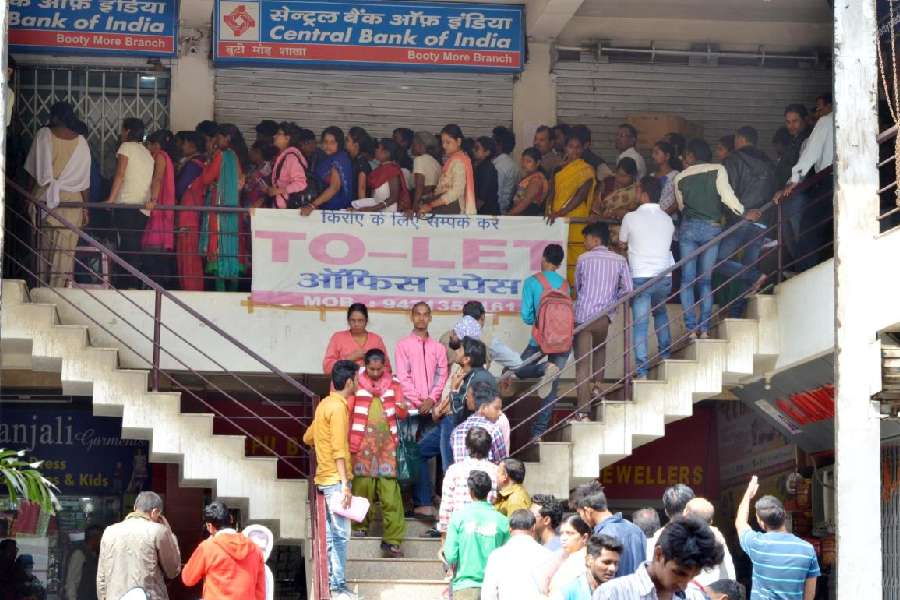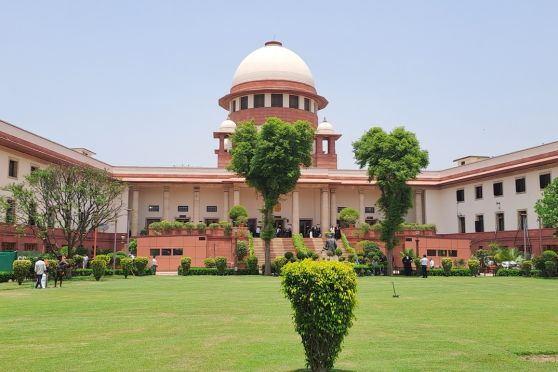 |
| A car on fire after one of the blasts in Ahmedabad on Saturday. (PTI) |
Ahmedabad, July 26: Sixteen small bombs killed at least 29 people in Ahmedabad in 15 minutes this evening, including 10 inside a hospital, a day after eight similar blasts struck Bangalore.
Another 100 were wounded as the explosions targeted a second hospital, railway stations, a theatre, a bus and markets between 6.45pm and 7pm, rocking the city with the highest number of bombings in any single terror strike in India.
The first blast occurred minutes after police received an email from an outfit that called itself the Indian Mujahideen. It warned of serial explosions, challenged the force to “stop us if you can”, and claimed this was revenge for the post-Godhra riots.
Chief minister Narendra Modi’s Maninagar constituency appeared specifically targeted, with four explosions occurring in crowded places like bus stands, a road crossing near a railway station and at the L.G. Hospital car park.
One of the worst attacks took place at the trauma centre of Civil Hospital in the heart of the city, where 10 people were killed, with some police sources suspecting a human bomb may have been used.
 |
Most of the blasts occurred in the crowded, Muslim-dominated and communally sensitive Old City. Many of the sites had been among the worst hit during the 2002 violence.
Communal peace, however, held firm till tonight. After the bombings, Hindus and Muslims together rushed the injured to ambulances.
“The blasts were of low intensity and similar to those which hit Bangalore,” Union minister of state for home Sriprakash Jaiswal said.
Some of the bombs were left in tiffin boxes strapped to bicycles, as in the May 13 Jaipur blasts that killed 65 people.
The Indian Mujahideen had claimed responsibility for the Jaipur and Varanasi (March 2006) blasts in emails sent to TV channels. Officers said the account from which today’s mail was sent had been created this afternoon.
Mangled remains of a bus, bicycles, motorcycles and an auto-rickshaw were seen at the blast sites. One TV channel showed a bus with its side blown up, windows shattered and the roof half-destroyed, with bloodstains inside and near the foot-board. Another showed a dead dog lying beside a blown-up bicycle.
“The bus had just started when the blast happened,” a man travelling on a nearby bus said. “Many people standing on the exit door fell down. There was fire all over.”
Coming a day after the attack on Bangalore — where an unexploded bomb was found near a mall today — the blasts spawned speculation of a “larger conspiracy to destabilise India” at a time it stood on the threshold of global glory thanks to the Indo-US nuclear deal.
BJP leader L.K. Advani, MP from neighbouring Gandhinagar, blamed the Centre and the lack of tough anti-terror laws but side-stepped questions about two BJP-ruled states being targeted.
The economy of Gujarat and Karnataka are among India’s fastest-growing, and today’s blasts come at the doorstep of the country’s financial capital Mumbai.
The bombings appeared to be a challenge to Modi who had boasted that under his rule, “Gujarat is a safe place where terrorists cannot strike”. The day’s first blast took place at Hatkeshwar in the chief minister’s constituency. A bomb was planted also at state home minister Amit Shah’s seat, Juhapura.
Modi tonight spoke to Prime Minister Manmohan Singh. All parties in Gujarat have appealed for calm.
Similar low-intensity blasts had taken place in Ahmedabad buses shortly after the riots. But the city had by and large stayed peaceful for over five years since the Akshardham temple attack, when militants killed over 30 devotees.
The Indian Mujahideen email named Madhya Pradesh, Maharashtra and Andhra Pradesh as target states and included industrialist Mukesh Ambani on its hit list.
“The Indian Mujahideen hereby claims sole responsibility for the Gujarat serial blasts, planned and executed by Indians only and it is our request to Lashkar-e-Toiba and other organisations... not to claim the responsibility for these attacks,” said the mail, which bore signatures of a certain Guru al Hindi and al Arbi.
The number of blasts, 16, was three more than the 13 in the 1993 Bombay blasts, which killed 257 people. The highest known number of synchronised blasts is about 500, which took place in Bangladesh three years ago.
Pakistan Prime Minister Yousuf Raza Gilani condemned the Bangalore and Ahmedabad attacks as “acts of senseless violence against innocent persons”.










